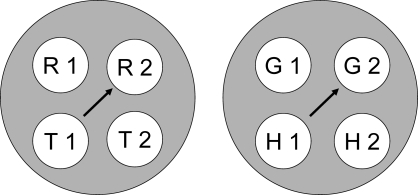Fig 10.
Two 4-member stimulus classes hypothesized to arise from the merger of the stimulus classes in Figure 9 via their common elements. R = red, G = green, T = triangle, H = horizontal, 1 = first temporal position within a matching trial, 2 = second temporal position within a matching trial. Arrows indicate sample–comparison combinations to which the pigeons should preferentially respond in a symmetry test.

